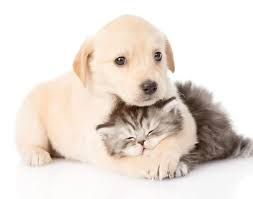A Cat's Deepest Secret Revealed
Animal Doc AM-Multi-Media
Dr. Don Don DeForge
31July2012
One of the DEEPEST SECRETS of the cat that we love is pain and discomfort caused by impacted anal sacs.
Each cat has two anal sacs. If you lift the tail of your cat and look at 3 PM and 9 PM, as if you are staring at a clock, you will be face to face to the openings of these sacs. Many times the veterinarian everts the anal mucosa to see the opening clearly. In most instances, a mild sedative is needed for a complete exam of this site.
No one knows their purpose but they can become impacted. Everyone knows about the problem in dogs. Normally in a dog or cat when there is a bowel movement the pressure allows the secretion found in these sacs to be expressed. In some animals, this does not occur.
There are many reasons postulated why in some animals the sacs get impacted and cannot empty normally. Here are some of these possible causes:
- Infection
- Inflammation
- Parasites
- Overweight animals
- Diarrhea
- Dietary Change
- Dermatitis of many types
- Allergy
- Genetics
The problem becomes serious when the impaction is not noticed which can lead to abscessation and rupture of the sac. The cat does not show the classic sign of anal dragging or scooting seen in the dog when the sacs are impacted. Many times the only way to recognize the problem is to have your veterinarian examine the area with sedation. If you notice a malodor from the anal area or your cat is chronically licking the anal area, you should see the "red light" and call your doctor immediately.
Always ask for a referral to an animal dermatologist before considering removing the glands-i.e. anal sacculectomy. Let the allergist or dermatologist let you know if this is warranted. Just removing a structure will not always alleviate the rubbing, licking, and sucking of the anal area.
Do not try to empty or clean the glands yourself. The Internet is full of articles on "how to" and this is one you do not want to attempt. One mistake and you can rupture the anal sac which can lead to the necessity of a surgical intervention by your veterinarian. Also, always ask your veterinarian to have an analgesic-sedative administered when the sac is examined and/or emptied. Finally, ask your LDVM for an oral analgesic [pain-killer] to give your cat at home after this procedure is done. It will be up to your veterinarian if an antibiotic or a topical local anesthetic or anti-inflammatory product is needed post-treatment. We, as a profession, are always searching for pain control and quality of life.
THE DEEPEST SECRET has now been revealed. Take this secret and share the answer with all of your friends who are cat lovers. Do it for the love of your cat today!
Dr. Don DeForge
Animal Doc AM-Multi-Media
31July2012
Silver Sands Veterinary Center
www.SilverSandsVeterinary.com
203-877-3221
FACEBOOK-Become a Friend at Silver Sands Veterinary
E-Mail DonDeForge@aol.com


Comments
Post a Comment